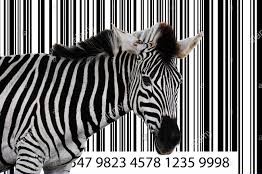UPC Codes vs. EAN Codes: What’s the Difference?
UPC and EAN codes are commonly used product identification numbering systems. Many people use these terms interchangeably, but there are several key distinctions. When reviewing UPC codes vs. EAN codes, understanding the difference is important.
Why Do Products Need a Code?
Product codes enable retailers to store and track information about the products they sell. They help differentiate similar products by size, color, or other features, and suppliers use them to quickly identify individual items or batches of an item. Product codes help monitor inventory levels, price changes over time, product popularity, and more.
How Are UPC and EAN Codes Different?
First of all, it’s helpful to understand what each code means. UPC (Universal Product Code) is a 12-digit numerical code used in the US and Canada for retail product identification. The Uniform Code Council (UCC) developed it, and it’s often referred to as a UPC symbol or barcode.
EAN (European Article Number) is an international standard for labeling products based on the UPC codes of the 1970s. However, it developed in the 2000s when international trade organizations realized that the sheer number of countries in Europe required more or different codes. EAN codes are similar to UPC codes but contain an extra digit for international product identification.
EAN codes are typically 13 digits long and are on products worldwide. They are now typically referred to as GTIN codes, or global trade identification numbers. UPC codes are also GTIN codes. The Global Standards Organization, or GS1, administers these codes, assigning unique codes to each product for which manufacturers submit an application. UPC codes are exclusive to the US and Canada, while EAN codes are used in the rest of the world.
Another major difference is the format of the two codes. The 12 digits of the UPC code are separated into groups of four, five, and three digits respectively. The last digit is a check digit that helps identify if the code has been incorrectly entered. EAN codes generally follow the same format as UPC but with an additional 13th digit at the beginning of the code.
Why Are These Codes Different?
UPC and EAN codes have different purposes. UPC codes were initially developed for North American retailers and manufacturers, while EAN codes were created as an international standard for companies worldwide. The extra digit in EAN codes allows them to contain more information, namely that extra digit for a country code, which is useful for international transactions.
Overall, UPC and EAN codes are two different types of product identification systems used by retailers and manufacturers. It is important to understand UPC vs. EAN codes, what the differences are, and which codes are appropriate for which products. Knowing these distinctions will help ensure your products are accurately identified and tracked, no matter where they sell.
Even a small mistake in these codes could lead to incorrect product identification, costly fulfillment mistakes, and delays in the supply chain. Avoid such mistakes by purchasing barcodes from a trusted seller who will take care of registering your product with GS1 and obtaining a unique number for each of your products.





